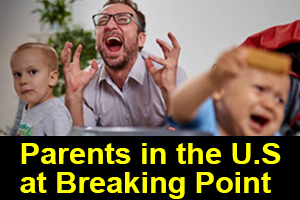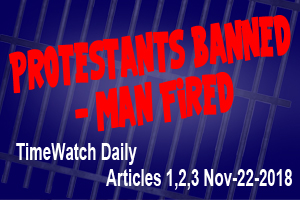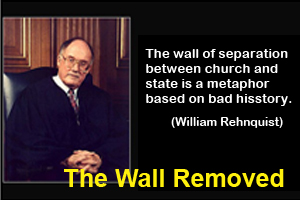

Donald Trump is still setting up concentration camps on American soil - U.S. News
Andrea Pitzer Jun 21, 2018 5:35 PM
When news came in recent days of the U.S. separating parents from children at the border and holding minors in a dedicated tent city in Texas, the phrase "concentration camp" began to appear in descriptions of the new facility. I was one of the people who used the term.
On Wednesday, President Donald Trump signed an executive order that may end up shifting the way families are processed, but as various journalists have noted, it is not yet clear that there will be any improvement.
For now, I will continue to use "concentration camp" for any internment of families clearly designed to punish them through indefinite detention, whether children and parents are together or apart.
What qualifies as a concentration camp? It's a fraught question, because the story of the camps is such agonizing history. Writing an account of concentration camps from the point more than 100 years ago when the phrase was first used for civilian detention right up to the present, I found that when asked what a concentration camp is, people almost always answer: "Auschwitz."
Auschwitz-Birkenau became the most infamous of the Nazi death camps because more than one million individuals were murdered there, some 900,000 of them the Jews of Europe, carried in on railroad tracks with the genocidal intent to end their lives. The grief of the individual losses, the devastation of a people, the stain on humanity, and especially the suffering of those who had to endure, whether they survived or not, means that Auschwitz *should* be the first thing that comes to mind when people hear the phrase "concentration camp."
And after writing my book, I believe that Auschwitz should be not only the first but also the second camp that comes to mind when hearing that phrase, because Auschwitz was not just one camp. As the millions who have visited the camp already know, Auschwitz had multiple incarnations. Its earliest incarnation points backward in time to reveal its evolution and stands as a warning sign today.
Before mass extermination began mid-war not far away at Auschwitz-Birkenau, the original main camp was already open. Auschwitz I was a functioning cog in the vast Nazi detention camp system that had existed for several years at that point.
The earliest days of the Nazi detention camp system stretch back to arrests made in the weeks after Hitler was appointed Chancellor of Germany in January 1933. At that point, the phrase "concentration camp" did not yet mean the things we think of today.
The term referred to early colonial camps detaining Boer women and children in southern Africa at the turn of the century, with death tolls reaching into the tens of thousands. It meant the camps of the First World War, which ended up interning hundreds of thousands of enemy aliens around the globe for no real purpose.
The latter system did not have the fatalities of the first camps, but taught people to register, to turn themselves in, to go calmly to detention when instructed to, and to wait out their time in detention as national pariahs.
The Nazi detention camp system did not emerge from a vacuum. It rose in the wake of all of these prior camp systems, and held reflections of smaller, informal camps that existed everywhere in Europe at the time, including some for "Gypsies" (the people we now call Roma or Sinti) in the Weimar Republic. Across nearly four decades before the Nazis seized power, the term concentration camp was used for all of these.
Even half a century later, it can be hard to understand the turn toward death camps and the horrors of Auschwitz-Birkenau. But it is much easier to discern the origins of Auschwitz I. It rose from the early Nazi system, which drew on the awareness of the many camps that already existed in the world. Hitler himself directly referenced the Boer camps and the camps of the First World War.
While reports from the latest U.S. camps carry strange echoes of death camps (such as talk of fictitious showers), it is the earlier camp tradition that has been unfolding in more concrete ways on the border this week.
Years of the rhetoric of infestation and dehumanization from the President and administration officials culminated in the erection of a tent city for children. Civilians sit confined like dangerous criminals, corralled in pens or cages like animals, all due to policies (not laws) that place asylum-seekers outside the normal legal process. It is clear that this was planned months ago to punish a vilified minority.
Auschwitz as a whole served as not just the end point of the Nazi abyss but also the bridge that marked the transition from the comprehensible horrors of prior camps to the unfathomable. We can see the growing parallels today in the blame that is cast on refugees and the expensive machinations that misallocate scarce resources and goad a fevered public into embracing authoritarian impulses.
What the U.S. has been operating this week are not death camps - those existed in only one historical moment. But these new sites are concentration camps, and their insidious presence opens the door for worse versions, even if they never enter the same tragic universe as the Shoah. We do not need to believe we would arrive at the same endpoint in order to know that we should not set foot on that bridge.
Andrea Pitzer is the author of One Long Night: A Global History of Concentration Camps. She has written for The Washington Post, Vox, Slate, and USA Today and McSweeney’s. She studied at Georgetown University’s School of Foreign Service and MIT, and at Harvard as an affiliate of the Nieman Foundation for Journalism. Twitter: @andreapitzer
Download







